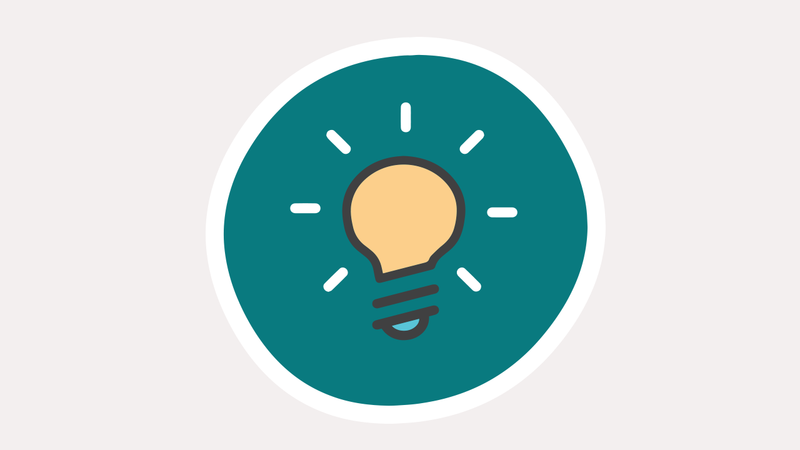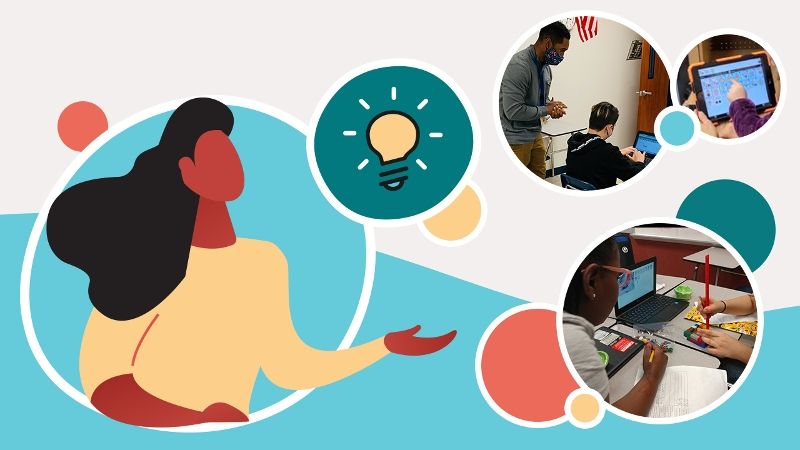Develop Technology Competencies

Get Started Developing Technology Competencies:
Districts support the design of inclusive learning experiences by identifying important technology skills and providing opportunities for educators to develop them. This includes ensuring support for accessible materials and assistive technologies.
Practice: The district identifies critical knowledge and skills that promote the design and delivery of accessible, learner-centered experiences, and provides all educators with opportunities to build those skills.
Actions that lead to the development of technology competencies for inclusive learning include:
- Establish technology competencies: Technology competencies for educators are established as part of evaluation.
- Provide opportunities to work toward competencies: Educators work toward the technology competencies established by the district.
- Provide training on accessible educational materials: Educators are provided opportunities to learn how to design learning experiences using accessible educational materials.
- Provide training on assistive technology (AT): Educators are provided opportunities to learn how to support the use of AT during learning experiences, as aligned to the district’s technology competencies.
Learn from Our Partners

- Blog Post: Five Things AT Leaders Need to Know About Inclusive Technology Systemsexternal site, UDL Center
- Blog Post: Five Things EdTech Leaders Need to Know About Inclusive Technology Systemsexternal site, UDL Center
- Podcast: It's Not Cheating! Myth Bustingexternal site, AEM Center at CAST
- Webinar Series: Learning with the Authors of Inclusive Learning 365, Center on Inclusive Technology in Education Systems (CITES) at CAST
- Case Story: BISD⎜Clute, TXPDF document
Resources
- Guide to Supporting AT, AEM, and Accommodationsexternal site, Center on Inclusive Technology & Education Systems (CITES) at CAST
- Personalizing the Reading Experienceexternal site, Webinar, AEM Center at CAST, 2020
- Personalizing the Writing Experienceexternal site, Webinar, AEM Center at CAST, 2020
- Guide to Professional Learning for Accessibility and Assistive Technologiesexternal site, Center on Inclusive Technology & Education Systems (CITES) at CAST
- Online Learning Series on Accessible Materials & Technologiesexternal site, self-paced online course, AEM Center at CAST
New York City's Story

New York City Department of Education (New York, New York)
The New York City Department of Education (NYC DOE) is the largest school district in the United States, serving approximately 1,126,000 students. Prior to the COVID-19 school building closures, NYC DOE focused on ensuring equity across the district with a vision for universal 1:1 technology access, as well as building the key supports needed to make such an undertaking work (e.g., teacher capacity, student digital citizenship skills). Given the challenge of bringing 1:1 device access to over a million students while ensuring equity and accessibility for all students, NYC DOE took a team-based approach, involving representation from a variety of departments to address system-wide technology capacity. NYC DOE’s Center for Assistive Technology prioritized strengthening the capacity of teachers, supervisors, related service providers, and school psychologists that know how to consider AT and conduct AT assessments. The Center for Assistive Technology historically provided various levels of support, including districtwide professional development (the Beyond Access Forum), on-demand support for districts and schools, and individualized support for students on specific pieces of AT. The goal of capacity building was to support, inform, and train school-based teams on Universal Design for Learning, instructional technology, and AT. These school-based teams were then charged with providing training and on-the-ground coaching for educators to use and integrate accessible and AT tools throughout instructional activities.
The rapid shift to online learning in spring 2020 accelerated this initiative, as the district noted: “The city had a crash course on accessibility ... the impact of accessibility on students and their learning environments raised awareness and skills ... COVID-19 resulted in a light-speed fast forward jump in the plan.” Further, the NYC DOE Center for Assistive Technology team noted that prior planning and collaboration helped lay the groundwork for rapidly building educator capacity. For example, in the yearly Beyond Access Forum, hundreds of teachers, administrators, service providers, students, advocates, and families attended dozens of workshops and AT demonstrations to build AT competencies at multiple levels of the educational system.
Supporting Research
- Blackstone, S. W., Luo, F., Canchola, J., Wilkinson, K. M., & Roman-Lantzy, C. (2021). Children with Cortical Visual Impairment and complex communication needs: Identifying gaps between needs and current practice. Language, speech, and hearing services in schools, 52(2), 612–629. https://doi.org/10.1044/2020_LSHSS-20-00088external site
- Harper, K. A., Kurtzworth-Keen, K., & Marable, M. A. (2016). Assistive technology for students with learning disabilities: A glimpse of the Livescribe pen and its impact on homework completion. Education and Information Technologies, 22(5), 2471–2483. https://doi.org/10.1007/s10639-016-9555-0external site
- Jones, B. A., Rudinger, B., Williams, N., & Witcher, S. (2019). Training pre-service general educators in assistive technology competencies for students with visual impairments. The British Journal of Visual Impairment, 37(1), 29–39.
- Laho, N.S. (2019). Enhancing school-home communication through learning management system adoption: Parent and teacher perceptions and practices. School Community Journal, 29, 117-142.
- Marino, M. T., Sameshima, P., & Beecher, C. C. (2009). Enhancing TPACK with assistive technology: Promoting inclusive practices in preservice teacher education. Contemporary Issues in Technology and Teacher Education, 9(2).